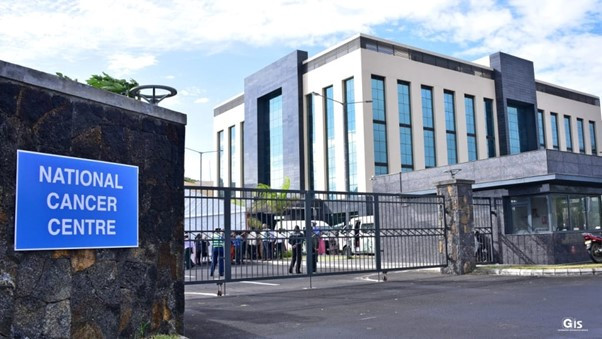Once used for applications in medicine, industry and research, many countries now have legacy radium-226 sources. With the support of the IAEA's technical cooperation programme, these disused sealed radioactive sources are being recovered safely, and countries are improving national capacities for their long-term management, including their potential reuse and recycling.
Radioactive sources have been used in Curaçao for several decades, including for brachytherapy services to treat various types of cancers. In January 2024, a total of 134 radium-226 low-activity radioactive sources were recovered from a concrete bunker beneath the Sint-Elizabeth Hospital in Curaçao, where they had been buried for more than 50 years. An IAEA mission supported the transfer of the radium-226 sources to a temporary storage facility where the packages will be safely stored until Curaçao implements an end-of-life solution. Protecting people and the environment from the radiation risks associated with disused sources includes ensuring their proper management when they are no longer in use.
At the end of the mission, the IAEA-led team confirmed that the concrete bunker only contained natural levels of radiation. This meant that it could be released from regulatory control.
"The hospital is finally free of [disused] radioactive material," said Ciaretta Profas, Policy Advisor, Curaçao Ministry of Health, Environment and Nature. "The expert mission provided a sound foundation for Curaçao's implementation of safe control of radioactive sources," Profas added.
Curaçao is a small island developing state and one of four constituent countries of the Kingdom of the Netherlands. The assistance to Curaçao was implemented thorough an extrabudgetary contribution of the Netherlands.
In February 2024, the IAEA also supported the Sri Lanka Atomic Energy Board in recovering 114 disused sealed radioactive sources, including those containing radium-226 and other elements. The sources were recovered from different devices, such as level and density gauges, brachytherapy applicators, and lighting conductors. Following the hands-on training of national counterparts, all recovered sources were detailed, characterized, registered, encapsulated and safely stored. The sources now await the next step in their life cycle, whether it be reuse, recycling or disposal.
"The collaborative spirit and shared expertise demonstrated throughout this mission have significantly bolstered our capabilities in the management of radioactive materials. It has not only augmented our operation efficiency but has also played a crucial role in advancing our ongoing initiatives aimed at sustaining the management of disused sealed radioactive sources," said Chairman Rosa of the Sri Lanka Atomic Energy Board.
The IAEA supports countries in the management of legacy radium-226 sources under the IAEA's Global Radium Management Initiative. It connects Member States with disused sealed radioactive sources with those that can recycle them, or that are interested in reusing them for valuable applications, including cancer care.
"Developing detailed approaches to dealing with sealed radioactive sources that have reached the end of their useful life is crucial for the sustainability of nuclear applications. By engaging with the Global Radium Management Initiative to recycle radium sources, Member States can create a solid plan for future work in this area," said Nora Zakaria, Head of the IAEA's Waste Technology Section.

In 2024, the IAEA provided Sri Lanka with assistance for the recovery of disused sealed radioactive sources (Photo: IAEA).






